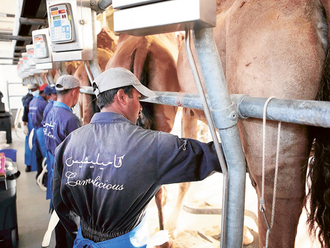
A trip to the mall with the folks is all about being indulged. A new pair of sneakers, the latest Hannah Montana T-shirt, rides in the play zone, a movie with buttery popcorn, creamy pasta for dinner, finished off with a double scoop of chocolate-chip ice cream for dessert.
Except, for ten-year-old Riya Kapoor it’s all of the above minus the popcorn, ice cream and cheesy pasta. This abstinence isn’t borne out of a need to watch her weight, but rather a severe case of milk allergy that she has had to live with since birth.
“We first discovered that she was lactose intolerant when I introduced Riya to formula milk at four months old,” says Sonia Kapoor, her mother. “She was violently ill and broke out into a rash.” The doctors diagnosed it as milk allergy. “We were shocked,” recalls Sonia. “Here I had an infant who was allergic to the most basic food for babies — milk.”
“The terms food allergy and food intolerance are often used interchangeably but are, in fact, very different,” says Dr Brenda Saunders, Homeopath, The Dubai Herbal and Treatment Centre. If somebody has a food allergy, their immune system has made very specific antibodies to that specific food protein and has mistaken it as something harmful. When the immune system is exposed to this food protein, it results in the release of antibodies, which in turn release histamine. Histamine is responsible for the itching, sneezing, swelling and inflammation experienced as the allergy. The severity of the reaction can vary from mild to life-threatening and is influenced by various factors, says Dr Saunders.
With Riya it has never been life-threatening, but is definitely a cause for concern. “In her case, it starts with a pain and itching in the ears followed by vomiting,” says Sonia. Over the years, the incidence of vomiting has reduced, but even today if she comes in contact with any milk product or food products that contain even traces of dairy, she breaks out into a rash and experiences swelling of the tongue and lips.
“Lactose intolerance involves an insufficient amount of the digestive enzyme lactase (pictured above), which is responsible for the breakdown of milk sugar lactose,” says Dr Saunders.
Inadequate digestion of lactose leads to uncomfortable symptoms of lactose intolerance. A person can have primary lactose intolerance that results from a genetic inability to manufacture the lactase enzyme or a secondary intolerance.
Bringing up a lactose-intolerant child can be challenging. “The hardest part was explaining why she couldn’t eat the things that other children love. It meant eating nothing at birthday parties and not sharing your tiffin at school.” Sonia remembers carefully reading labels for traces of dairy. “It can be masked as butter, milk solids, milk lecithin, whey, whey protein and yoghurt. You’ll be surprised at the number of foods made using some form of dairy ingredient,” says Sonia.
Lactose intolerance is managed by avoiding lactose-containing foods. Using plant-based digestive enzymes, including lactase, to support digestion of sugars can help, says the doctor.











